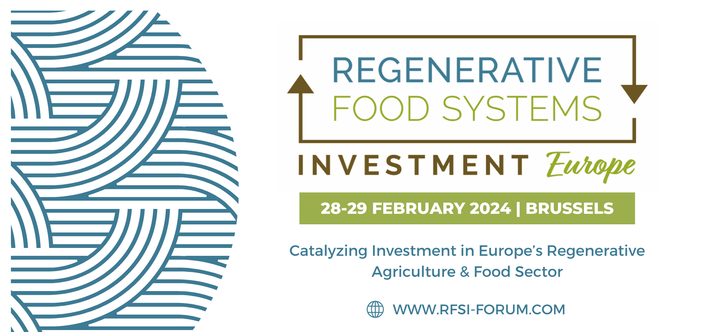Going In-house for SFDR: The Common Pitfalls to Avoid

In a world engulfed with companies greenwashing their business activities, regulators are stepping in to protect asset owners and retail investors. The trend overall is for those fund managers who claim to have sustainable or “green” portfolios to publicly disclose the data to support it.
Increased sustainability reporting regulation has a multitude of potential benefits, including greater transparency for asset owners to invest in sustainable ventures as well as the ability for fund managers to drive genuine change in the sustainability practices of their portfolio companies by measuring verifiable performance.
In the European Union, the Sustainable Finance Disclosure Regulation (SFDR) requires fund manager to disclose their ESG performance data as a way to improve transparency and validity of sustainability claims. To do this, fund managers will need to collect data for the mandatory Principal Adverse Impact (PAI) indicators for each portfolio company, for each quarter, during every reference period. While the regulation represents a great move towards bolstering authentic ESG and impact claims, it’s a potentially tricky and cumbersome endeavor to actually execute on in a meaningful and efficient way.
Many fund managers are beginning to face difficulties complying with SFDR, especially those investing in private markets where data is oftentimes not readily available. These challenges include establishing a shared understanding across the capital stack, efficiently collecting and sharing data from private portfolio companies, and understanding complex (and evolving) definitions.
One approach has been to try using in-house staff to manage the process, attempting to leverage existing systems and utilize direct communications. But this approach often quickly presents many problems such as:
• Connecting disparate data sources,
• Staying up-to-date with regulations,
• Dealing with legacy and/or incongruous systems,
• Key person dependency, and
• Disjointed communication channels
All-in-all, managing SFDR communications alone begin to stack up and fund managers are feeling the pressure against stringent timelines. To help those fund managers who are hoping to begin by manually managing SFDR processes using their own team and pre-existing tools, we’ve outlined the five common pitfalls we’ve seen of using in-house solutions for SFDR compliance.
Pitfall ❶ — Underestimating the expertise required to be compliant by the reporting deadline: June 30, 2023
Comprised of thousands of pages of dense legal and technical documentation issued by EU Commission regulators, SFDR regulations require expertise to understand and interpret the implications for any given fund manager’s situation. In addition, data security, staying up-to-date with regulatory clarifications, and building audit-ready data trails represent significant topics to be planned for and managed.
All this combines to mean that — in order to meet the June 30, 2023, reporting deadline — fund managers should ideally have started preparations now, in early Q1 of 2023.
With greater public scrutiny and the loss of market competitiveness if unable to market products as "sustainable," it's no longer possible to add all this as a side duty of the legal counsel and head of operations.
✔️ Fund managers should have or engage the requisite legal expertise to continuously understand and interpret SFDR regulation for their firm, and then support this by compliant-focused, purpose-built and ideally automated systems.
Pitfall ❷ — Placing unnecessary stress and deadlines on portfolio companies
Whilst large multinationals can afford to dedicate significant resources to ESG topics, the vast majority of businesses raising private capital simply cannot. Portfolio companies will need to clearly understand why and how SFDR affects them, their obligations for reporting, and provide the requisite data — for each of their EU investors, across each quarter of a reference period — all while running a growing business.
Unless managed carefully, this can quickly represent an unsustainable time burden, particularly those early in their journey (seed to Series A) who do not have the resources to employ a dedicated resource.
✔️ Fund managers should ensure they are collecting only the most critical data for the purposes of calculating PAIs, whilst providing their portfolio companies with dedicated support and, most importantly, time — otherwise the costs and frustration will increase which is bad for business (and expected returns).
Pitfall ❸ — Unscalable and inflexible processes
We are seeing a wave of regulators worldwide introducing mandatory ESG reporting processes, and this trend is expected to continue. However, it’s impossible to say yet to what extent the regulations will align in terms of shared data requirements and reporting standards.
In addition, it’s widely expected that the scope and demands of the EU’s SFDR will increase substantially in the next three years (for example, moving beyond the “best efforts” obligation and introducing sanctions for breaches).
To respond to these changes, in-house systems and processes will have to be flexible, cost effective and always aligned to the relevant standards, including:
• Changes to reporting standards must be easily replicated and output
• Complex metric calculations from aggregated data must be accurate
• Proxy data integration must be seamless, and not degrade in legacy systems, and
• Knowledge of regulatory requirements must disseminate efficiently through teams
✔️ To stay future-proof, fund managers should ensure data reporting systems and processes are highly scalable and easily adaptable to evolving standards and new regulations.
Pitfall ❹ - Missing opportunities to turn reporting into performance
Whilst SFDR is mandatory and must be complied with, it also represents a significant opportunity for the market beyond simply "checking a box" for compliance. For the first time, entire capital stacks are discussing, sharing and analyzing ESG data. This is great news for ESG and impact transparency and optimization efforts, and there is exciting potential to build on these data baselines and leverage digital infrastructure for value-add ESG monitoring.
Perhaps the most strategically valuable opportunities include establishing correlations between ESG and financial performance (double materiality) and unlocking new investment opportunities through new financial products (e.g impact-linked finance). Beyond this, it's expected that companies' ESG performance will continue be increasingly publicly available, so there is a clear competitive differentiation factor amongst peers to be gained by leveraging stakeholders via engagement over impact objectives, progress and successes. These opportunities can be largely lost if in-house systems and processes do not capture investment-grade data and enable efficient dissemination seamlessly across multiple parties.
✔️ Future-forward fund managers will want to capture this opportunity to move from mandatory ESG reporting to value-add ESG performance management.
Pitfall ❺ — Underestimating the cost of all of the above
Unless processes are scalable, the marginal cost of compliance will be far too high and start to pose an unavoidable barrier to growth. Firms must budget accordingly to be able to invest on skills and systems continuously across reporting cycles.
✔️ Fund managers focused on operational efficiency will want to leverage third parties with specialist compliance services and tools, as these can be significantly more economical through providing expertise and cost-effective solutions that still offer opportunities for strategic growth.
Conclusion
SFDR seeks to achieve greater transparency and accountability with mandatory policy writing, data collection and disclosures. Funds' systems, processes and communications channels will thus need to be constantly reviewed and appraised to make sure they are fit for purpose and adhering to their regulatory duties.
Proof has identified the common pitfalls that should be avoided when seeking to build this capability in-house so your organization can be ready for 2023 SFDR reporting and stay continuously compliant into the future as regulations evolve.
We work to support fund managers by offering ongoing insight on SFDR obligations and providing a digital solution for data gathering and automated disclosure document generation.
→ Is your fund in-scope for SFDR? Find out by completing our SFDR Eligibility Assessment.
→ Ready to get started? Learn more about request a call with our team to evaluate if Proof is a good fit for your organization.

